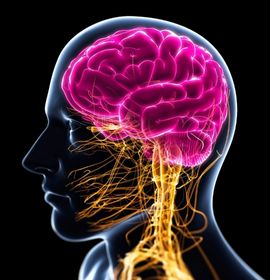Among health care providers it is common knowledge that patients suffering from neurological disorders such as stroke, Multiple Sclerosis, Parkinson’s, Transverse Myelitis, and Cerebral Palsy can benefit from regular exercise, like that received during a whole body vibration session. And while benefits can vary greatly depending on the severity and type of disorder, exercise has an important role to play in reducing depression, which, if left untreated, can lead to faster cognitive decline.1 Exercise also lowers the risk of sedentary-induced, secondary illnesses that can accompany the onset of a neurological condition.
In addition to the many health benefits, the psychological benefits can be the most important part of managing a neurological disorder. Exercise, like whole body vibration, can improve everything from endurance to mood,2 and researchers are hard at work to discover how we can use exercise to both manage and avoid these life altering conditions.
In a recent study by Julie Robichaud, Ph.D., a research assistant professor at the department of movement sciences at the University of Illinois, Parkinson’s study subjects showed improved balance, walking velocity, and the ability to release a contraction improved by 30 percent.3 In 2008, a team of researchers found that Alzheimer’s patients who incorporated physical activity in their daily lives reduced cognitive decline and improved psychological and/or physical performance, as well as mobility, balance, and strength.4
Researchers are also making promising finds related to exercise like WBV and the treatment of Parkinson’s disease (PD). In 2010, a study found that aerobic exercise improved several measures of cognitive function,5 providing evidence that such exercise regimens may provide significant benefits to patients with PD.
While epilepsy, brain tumors and some other brain disorders are not preventable, there is evidence that exercise can help you to avoid certain neurological problems. The Caerphilly Heart Disease Study followed 2,375 male subjects over 30 years and examined the association between healthy lifestyles and dementia. The study identified that men who undertook regular physical exercise had a 59% reduction in dementia when compared to the men who didn’t exercise regularly.6 Reasons physical activity leads to a reduced risk of Alzheimer’s include lowering body weight, since obesity is a risk factor for the disease,7 and improved blood pressure and cardiovascular health.7
When designing a wellness plan the benefits of regular cardiovascular exercise can have a positive impact on your life. From brain health to overall mental well-being, adding whole body vibration to your routine has benefits for every part of your health. Take steps today to protect your brain from the ravages of time and ill health. Find out how you can get a VibraWav Pro series machine for your home so you start to reap the benefits of this fun, easy form of exercise today. To find out more, visit vibrawav.com or contact us at info@vibrawav.com.
1. Rolland, Y., Abellan van Kan, G. and Vellas, B. 2008. Physical Activity and Alzheimer’s Disease: From Prevention to Therapeutic Perspectives. J Am Med Dir Assoc. 9:390–405.
2. Sutoo, D., Akiyama, K. (2003) Regulation of brain function by exercise. ‘’Neurobiology of Disease’’ 1–14.
3. Two-Year Exercise Program Improves Physical Function in Parkinson’s Disease: The PRET-PD Randomized Clinical Trial. Neurorehabilitation and neural repair 06/2014; DOI: 10.1177/1545968314539732
Source: PubMed
4. Rolland, Y., Abellan van Kan, G. and Vellas, B. 2008. Physical Activity and Alzheimer’s Disease: From Prevention to Therapeutic Perspectives. J Am Med Dir Assoc. 9:390–405.
5. Nocera, J. R., Altman, L. J. P., Sapienza, C., Okun, M. S. and Hass, C. J. 2010. Can exercise improve language and cognition in Parkinson’s disease? A case report. Neurocase: The Neural Basis of Cognition. 16(4):301–306.
6. Elwood P, Galante J, Pickering J, et al. Healthy Lifestyles Reduce the Incidence of Chronic Diseases and Dementia: Evidence from the Caerphilly Cohort Study. PLOS ONE 2013;8(12)e81877. http://www.plosone.org/article/info%3Adoi%2F10.1371%2Fjournal.pone.0081877
7. Friedland, R. P., Fritsch, T., Smyth, K.A., Koss, E., Lerner, A. J., Chen, C. H. et al.. 2001. Patients with Alzheimer’s disease have reduced activities in midlife compared with healthy control-group members. The National Academy of Sciences. 98(6): 3440–3445.
8. Kivipelto, M., T. Ngandu, L. Fratiglioni, M. Viitanen, I. Kareholt, B. Winblad et al.. 2005. Obesity and Vascular Risk Factors at Midlife and the Risk of Dementia and Alzheimer Disease. Archives of Neurology. 62(10):1556–1560.













































